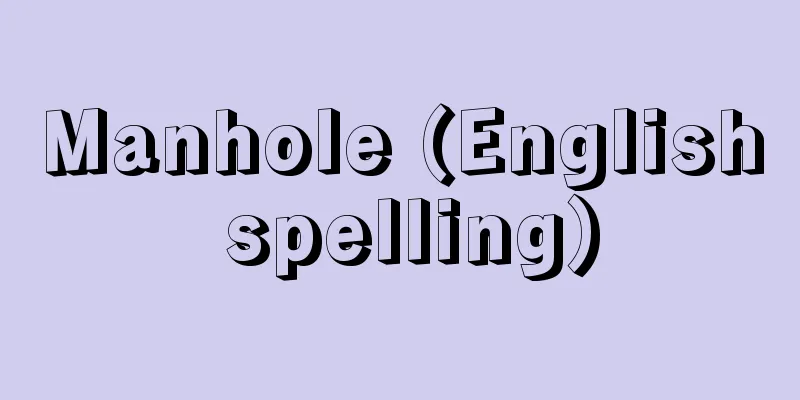Basic food - Kisoshokuhin

|
In terms of nutrition, these are the food groups that classify foods according to the characteristics of their nutritional content. In Japan, from the perspective of practical nutrition, and also from the perspective of nutritional guidance for improving eating habits and preventing lifestyle-related diseases, as well as for treating and improving illnesses, the method of dividing foods into six basic food groups has been adopted. People are advised to create menus by appropriately combining foods from each food group so as not to be unbalanced in nutrition. The foods in the six basic food groups and their characteristics are as follows: (1) Fish, meat, eggs, and soybeans are rich in protein and contain fat, minerals (phosphorus and iron), and vitamins ( B1 , B2 , and niacin). (2) Milk, dairy products, and fish that can be eaten with the bones (including seaweed such as wakame, kombu, and nori) are rich in calcium, protein, fat, and vitamins, and seaweed is rich in iodine. (3) Green and yellow vegetables are rich in vitamins A, C and salts. (4) Other vegetables and fruits are rich in vitamin C. (5) Rice, bread, noodles, and potatoes are mainly starch-based and provide energy. They are eaten in large quantities as staple foods, and therefore also provide protein, vitamin B1 , and minerals. (6) Fats and oils are rich in vitamins A and D. Depending on the country or teaching method, there are some places where it is divided into four groups. In Japan, the Ministry of Health, Labor and Welfare and the Ministry of Agriculture, Forestry and Fisheries jointly created the "Dietary Balance Guide" in 2005, which clearly shows desirable meal combinations and approximate portions. This teaching method divides food categories into five groups: staple foods, side dishes, main dishes, milk and dairy products, and fruits, and shows a daily meal balance with illustrations. [Tomomi Kono and Yonago Yamaguchi] "Explanation of the Six Basic Foods for Good Health," 4th edition, edited by the Japanese Dietetic Association (1995, Daiichi Publishing)" ▽ "Keyword Nutrition Guidance, supervised by Yoshitomo Fujisawa (1996, Asakura Publishing)" ▽ "Standard Food Composition Tables 2006, 5th revised and expanded edition, edited by the National Association of Chef Training Institutions (2005, published by the National Association of Chef Training Institutions and the Cooking Nutrition Education Corporation)" [References] |Source: Shogakukan Encyclopedia Nipponica About Encyclopedia Nipponica Information | Legend |
|
栄養上、食品を栄養成分の特徴別に分類したそれぞれの食品群をいう。日本では実地栄養学的見地から、また、食生活改善や生活習慣病予防のため、あるいは疾病の治療や改善のための栄養指導の面から食品を六つの基礎食品に分ける方法がとられてきた。栄養が偏ることのないように、各食品群から適当に取り合わせて献立をつくるように指導される。六つの基礎食品群の食品と特徴は次のとおりである。 (1)魚、肉、卵、大豆 タンパク質に富み、脂肪、無機質(リンと鉄)、ビタミン(B1、B2、ナイアシン)を含む。 (2)牛乳、乳製品、骨ごと食べられる魚(ワカメ、コンブ、のりなど海藻を含む) カルシウムに富む。タンパク質、脂肪、ビタミンも多く、海藻はヨードを多く含む。 (3)緑黄色野菜 ビタミンA、Cや塩類に富む。 (4)その他の野菜、果物 ビタミンCに富む。 (5)米、パン、麺(めん)、いも デンプンが主成分でエネルギーが主体。主食として多量に食べられるので、タンパク質、ビタミンB1、無機質をも供する。 (6)油脂 ビタミンA、Dに富む。 なお国や指導方法によっては、4群に分けるところもある。日本では2005年(平成17)に、食事の望ましい組合せやおおよその量をわかりやすく示した「食事バランスガイド」が厚生労働省と農林水産省の共同により作成された。この指導方法では料理区分を主食、副菜、主菜、牛乳・乳製品、果物の五つのグループに分け、1日分の食事バランスをイラストで示している。 [河野友美・山口米子] 『日本栄養士会編『解説 健康づくりのための6つの基礎食品』第4版(1995・第一出版)』▽『藤沢良知監修『キーワード栄養指導』(1996・朝倉書店)』▽『全国調理師養成施設協会編『食品標準成分表2006』5訂増補版(2005・全国調理師養成施設協会、調理栄養教育公社発売)』 [参照項目] |出典 小学館 日本大百科全書(ニッポニカ)日本大百科全書(ニッポニカ)について 情報 | 凡例 |
>>: Single indictment principle
Recommend
"Precis de stylistique" (English spelling)
...The "affective value" he speaks of i...
Treaty on the Protection of Marine Life - Treaty on the Protection of Marine Life
… [background] Because their fur is high quality ...
Literary criticism (English: literary criticism)
Analysing the impression and emotion that a liter...
Oharame - Oharame
A type of female peddler. From the mid-Heian peri...
Karyotype - Karyotype
A symbolic representation of the shape, size, and ...
Omaruyama Tomb - Omaruyama Tomb
This keyhole-shaped tumulus is located in Kamimuka...
On-road model - On-road model
… [Type of motorcycle] There are many different t...
Ei [town] - Ei
An old town in the southern part of the Satsuma Pe...
Stamp Tax Revolt
...The Breton region was the latest to appoint lo...
True Gokurakuji Temple
A Tendai Buddhist temple in Sakyo Ward, Kyoto City...
West Syndrome
…3Hz spike-and-wave patterns appear throughout th...
Descriptive grammar
A description of the state of a language at a cert...
Brickwork architecture
Architecture constructed with brick as the main ma...
Vaishali (English spelling)
One of the six great cities of ancient India, it w...
Windows95 - Windows 95 (English)
An operating system for personal computers release...


![Oonejime [town] - Oonejime](/upload/images/67cb174d1b5c9.webp)






